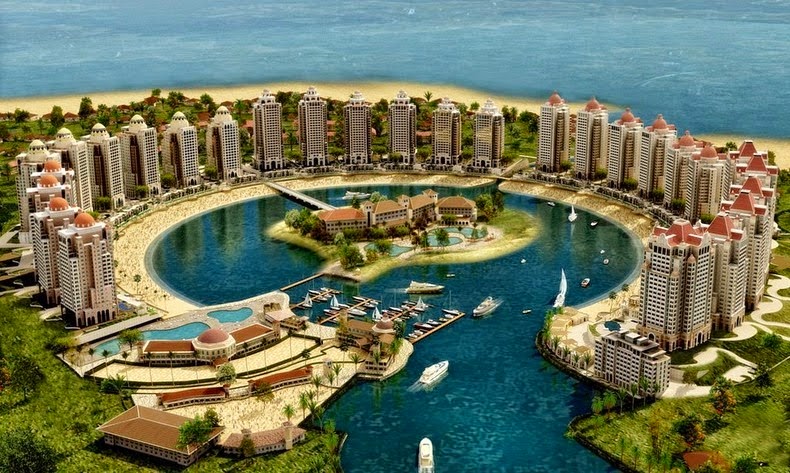The
Pearl-Qatar in Doha, Qatar, is an expensive residential complex that is being
crafty developed on an artificial island, off the coast of Doha’s West Bay. The
four-square-kilometers island formed on reclaimed land has 32 KM of new
coastline lined with private villas, dozens of apartment’s towers and hundreds
of homes, along with extravagance hotels and luxurious stores and restaurants.
Since from 2012, over 5,000 inhabitants have already moved in, although
construction work will complete in 2015, the island will have room for 41,000.
Therefore The Pearl-Qatar is one of the most aspiring development project in
Qatar, and the first development to offer freehold and residential rights to
international clients.
The
development’s name “Pearl” refers to the main pearl-diving industry that used
to be based on the shallow seabed where the island is being built. Qatar was
one of the major pearl traders of Asia before the Japanese introduced cheaper
more inexpensive pearls just before Qatar's oil boom. The island is beautifully
design & resembles a string of pearls. The Pearl-Qatar’s first phase and
gateway to the Island boasts of the world’s longest waterfront extravagance
retail walkway, the 3.5 KM marina-front pedestrian boardwalk “La Croisette”,
actually home to international hospitality brands and high-end boutiques. The
big Porto Arabia district comprises 31 apartment towers around a circular
lagoon with a central island and a marina with space for 750 boats.
There’re
also over 400 town homes, and more than 6,000 parking spaces and widespread
space for retail stores including a multitude of internationally famous
outlets. These also include brands like Hugo Boss, Giorgio Armani, Roberto
Cavalli and Elie Saab. There’ll also be a “Venice-like community” with
extensive canal system, pedestrian-friendly squares and plazas and beachfront
townhouses. There is even a replica of Venice’s Rialto Bridge. Well, when this
huge project was first revealed in 2004, the estimated initial cost of
constructing the island stood at $2.5 billion. However, now it is believed the
project cost will touch $15 billion upon completion.












































